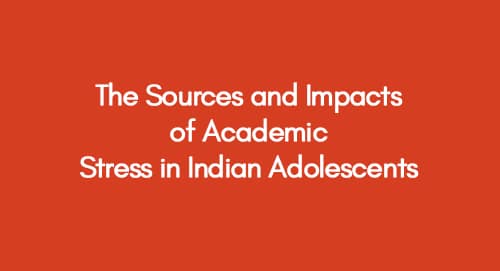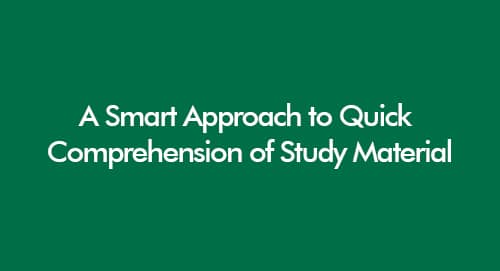
Civil Engineering Dissertation Topics | 120 Latest Ideas in 2025
September 26, 2022
How to Write in Third Person? | Style of Narration
September 30, 2022Introduction
In the modern environment of nonstop activity, stress has become an unavoidable phenomenon that affects individuals of all ages, genders, and occupations. Seminal researchers defined stress as a relationship between people and their environment that is considered important to them and beyond their coping capabilities.
Explore Organisational Support on the Psychological Well-being of the Employees
On the other hand, cognitive well-being is a willingness to live in harmony with themselves, other people, and events. It has been characterized as "engagement with existential challenges of life" and is critical to effectively managing new environments, relating meaningfully, realizing one's potential, and achieving life goals. As a result, the experience of stress can be viewed as either a challenge that leads to life enhancement or as a hazard that diminishes well-being.
Academic stress examples have been extensively examined among college students in India and various other countries, focusing on their impact on psychological well-being. When academic stress is experienced at a manageable level and is perceived through an optimistic lens, it can result in positive outcomes like motivation and enhanced performance. However, when academic stress is viewed as harmful or escalates to excessive levels, it can lead to negative consequences such as poor physical health, academic underachievement, challenges in interpersonal relationships, and depression.
Normative stresses, such as developmental obstacles, the transition from high school to university, and academic pressure, have been identified in studies as causing psychological discomfort in college students. Second, non-normative stress factors such as a death in the family and unexpected setbacks, and third, daily annoyances such as the conflict between parent and child, financial constraints, relationship implications, and academic requirements, which, when encountered together, become sturdy predictors of poor psychological consequences.
According to the National Crime Records Bureau, at least one student attempts suicide in India every hour. Every day, over 28 people commit suicide. In 2018, up to 10,159 adolescents committed suicide, according to statistics. With an average of 4 suicides per day, Maharashtra had the largest number of these suicides, following Tamil Nadu and Madhya Pradesh.
- Furthermore, in the previous five years, at least 60 students have attempted suicide at IITs and IIMs.
- Twelve of India's 23 IITs have experienced 50 suicides. While a few examples are revealed, the vast majority are not.
- Several students commit to Kota, a key teaching hub for competitive examinations and intense academic pressure every year.
- According to a Lancet journal report, the age range 15-29 has the highest rate of suicide in India. Men commit suicide at a rate of 40%, whereas women commit suicide at a rate of 60%.
- With 38,000 students attempting suicide since 2015, India has the highest adolescent suicide rate.
Stress Factor During Covid-19
Since December 2019, the COVID-19 pandemic has posed a significant hazard because of the high mortality, infections, and psychological stress risk. A substantial number of students were impacted as a result of taking a long hiatus from academic activities and remaining at home.
An online survey of the Perceived Stress Scale (PSS) was administered to students across India using a snowball sampling approach. Participants reported their study routines and obstacles throughout their confined time, in addition to demographic information. The statistical scores for the replies were computed, and demographic characteristics were examined. The PSS levels were examined, and variance and regression analyses were done.
Students were noted to be usually worried during lockdown and the epidemic. Females (mean = 3.03) were more distressed than men (mean = 2.61) because they were continually under pressure from stressful life events (OR = 0.752, 95% CI = 2.425-310.642) and were concerned about their studies (RII = 0.67, OR = 2.168, 95% CI = 0.332-6.691).
Sources and Impacts of Stress on Students
Social support is an essential stress reliever connected with college students' stress-coping abilities. As a consequence of various investigations, researchers have defined it as an integrated construct that depicts the physical and emotional comfort provided to individuals by their family members, acquaintances, and other significant people, which may result in favourable results.
- Indian college student's mental health is significantly connected with social support and adversely associated with perceived stress.
- Perceived stress is highly related to unpleasant life events but not to happiness.
- Gender has no bearing on psychological well-being.
Depression, anxiety, behavioural issues, impatience, and other issues have been noted in adolescents who are under a lot of academic pressure. Depression was also discovered among stressful teens since it is associated with distractibility, fear of failure, poor future appraisal, and so on. Adolescents were also observed to engage in hazardous behaviours such as increased alcohol and drug intake, unprotected sexual encounters, lack of physical activity, and poor food and sleeping patterns. The strain these students face to excel is so intense that suicide attempts have increased fivefold.
Use of Psychodynamic Therapy in Comparison to Medication Help in Treating Depression in Teenagers
It is also important to recognize that reduced stress does not guarantee that students will do effectively; in fact, in these conditions, students will regard the activity as unchallenging and might become bored and frustrated. Though certain degrees of stress motivate students to perform at their best, when it is not managed effectively owing to insufficient resources to deal with the stress, it can have negative implications for both the student and the institution.
The stress reaction induced by everyone is the same regardless of the cause. For example, marriage stress, exam worry, work stress, the impact of playing extensive video games and so on would all cause the same physiological responses in the body. This is mostly because of the adreno-medullary system, which is the aspect of our nervous system's sympathetic system, and the adrenocortical axis, which results in the "fight or flight" response. Variations in heart rate (HR), blood pressure (BP), respiratory rate, increased blood circulation to skeletal muscles, and other physiological changes can be detected in the body.
Academic Pressure
Students these days endure a lot of pressure in school and college with assignments, homework, and tests. Modern education has become one-size-fits-all. Memorization of facts and concepts is promoted in rote learning. There is also a pressing drive to perform academically. Stories of outstanding students achieving high rankings and earning large salaries frequently make the news, generating a specific impression among students. These repeated pictures contribute to students' dread of failure.
Constant pressure is immediately reflected in children's lack of performance and motivation. Parents also fail to recognize these concerns and cover them up with delusional statements. These problems worsen, and stress often manifests itself in various forms such as anxiety, melancholy, and uneasiness, which can have a significant impact on a student's life.
According to the Lokniti CSDS- KAS Youth Survey 2017, named "Attitudes, Anxieties, and Aspirations of India's Youth: Changing Patterns," four out of ten students experienced depression. According to a poll of 15-34-year-olds, one out of every four young children suffer from sadness, melancholy, or suicidal thoughts. The survey is important for learning more about college students' emotional maturity.
Ethnicity and Caste Pressure
There has been an upsurge in the number of students attending institutions who are identified as ethnic minorities. Students who identify as an ethnic minority may not feel accepted on college campuses and are more likely to experience stress as a result of discrimination. Discrimination and racism can lead to emotions of melancholy, alienation, rage, anxiety, and disengagement.
The Sukhdev Thorat committee was formed to look into incidents of harassment against SC and ST students in higher education institutions. There has been widespread prejudice against students from the SC and ST groups at AIIMS. According to the data analysis and findings of the committee formed to investigate the allegations, several of the pupils claimed to have been segregated. According to the commission, about 72% of SC/ST pupils indicated some form of prejudice during the teaching session. Approximately 69% said that they do not receive adequate help from teachers.
Approximately 84% had assessment issues. 76% of respondents said the examiner had inquired about their caste background. Even in their hostels, students encountered prejudice. Many students reported feeling alone in hostels. The committee also discussed the prejudice experienced by SC/ST teachers in depth. As a result, places for members of the SC/ST groups have shrunk. This significantly limits their prospects.
Coursework
For a variety of reasons, many students find the adjustment from high school to college difficult. Coursework is a major source of stress for college students. Students frequently struggle to meet deadlines or deal with the extra workload that comes with attending college.
Analysis of Differences Across Different Streams in Academics
| Variable | Stream | Comparison | Sig |
| Personal Inadequacy | Humanities | Commerce | .023* |
| Management | .475 | ||
| Science | .510 | ||
| Commerce | Management | .332 | |
| Science | .381 | ||
| Management | Science | 1.00 | |
| Fear of Failure | Humanities | Commerce | .304 |
| Management | .999 | ||
| Science | .924 | ||
| Commerce | Management | .239 | |
| Science | .652 | ||
| Management | Science | .873 | |
| Interpersonal Difficulties | Humanities | Commerce | .087 |
| Management | .001* | ||
| Science | .479 | ||
| Commerce | Management | .875 | |
| Science | .002* | ||
| Management | Science | .000* | |
| Teacher pupil relationship | Humanities | Commerce | .153 |
| Management | .005* | ||
| Science | .868 | ||
| Commerce | Management | .868 | |
| Science | .034* | ||
| Management | Science | .000* | |
| Inadequate study facilities | Humanities | Commerce | .003* |
| Management | .002* | ||
| Science | .322 | ||
| Commerce | Management | .973 | |
| Science | .224 | ||
| Management | Science | .224 |
Conclusion
Academic stress has become a widespread issue in many countries, civilizations, and ethnic groups. The current study revealed that academic stress is still a serious problem hurting a student's mental health and well-being. Stream disparities in stress experience were also noted. Thus, management of the disease becomes critical at all levels, namely personal, institutional, and societal.
Techniques such as neurofeedback, meditation, life-skills training, relaxation methods, and psychotherapy have been discovered to be beneficial in curbing stress among students. Recognizing the source of stress from various spheres will allow the field's professionals to tailor-make intervention for students by incorporating the most effective strategies. Enhancing a student's holistic well-being would ultimately be beneficial not just to the individual, but also to the total productivity of the institution.
Get 3+ Free Dissertation Topics within 24 hours?



























